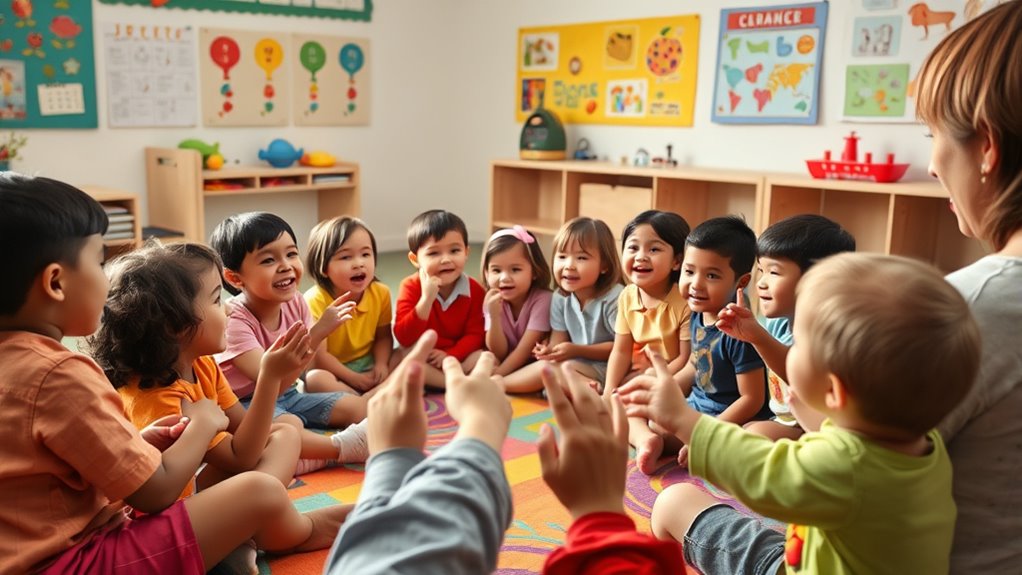To shift from babbling to storytelling, focus on a step-by-step approach that combines gestures, vocabulary growth, and vocal exploration. Encourage your child to experiment with sounds, imitate gestures, and connect words with actions. Play activities that promote both speaking and gesturing help build confidence and understanding. As your child’s language skills develop, they’ll naturally progress toward more complex storytelling. Keep exploring these steps, and you’ll discover how to support your child’s communication journey every step of the way.
Key Takeaways
- Promote early babbling to strengthen sound production and encourage experimentation with new vocalizations.
- Incorporate gestures alongside speech to reinforce word meanings and support vocabulary development.
- Use interactive activities like pointing, miming, and mimicking to foster gesture-speech integration.
- Gradually transition from reliance on gestures to spoken storytelling by combining both communication modes.
- Create a stimulating environment that encourages expressive language growth, leading to confident storytelling skills.

Every child begins their language journey with babbling, a seemingly simple activity that lays the foundation for future communication. During this stage, your little one experiments with sounds, practicing how to produce vocalizations that will eventually form words. But babbling isn’t just about making noise; it plays an essential role in gesture development and vocabulary expansion. As your child babbles, they start to understand the connection between sounds and actions, often pairing gestures like pointing or waving with specific words or intentions. These gestures serve as early communication tools, helping your child express needs and interests before they can speak clearly. Watching your child combine gestures with sounds is a sign they are actively building the bridge between non-verbal and verbal communication, setting the stage for more complex language skills.
As your child’s vocabulary begins to grow, you’ll notice their understanding of words and their ability to use them in context also expand. During this period, they might say their first words, which often correspond with familiar objects, people, or actions. Encouraging them to use gestures alongside new words can greatly boost their vocabulary expansion. For example, if they say “milk” while reaching out or pointing at their cup, you reinforce understanding and help them associate words with their meanings. This dual approach accelerates their language development because it taps into their natural inclination to communicate through both speech and gestures. Over time, your child will start to rely less on gestures alone but will still use them to support their spoken language, especially when they’re learning new or complex words.
You can foster this growth by engaging in activities that promote gesture development and vocabulary expansion. Play games that involve pointing, miming, or mimicking actions—like pretending to eat or waving goodbye. Narrate your actions and theirs, emphasizing new words and gestures, so your child begins to connect sounds with meanings. Reading picture books together offers another excellent opportunity: ask your child to point to objects, imitate sounds, or use gestures to express their understanding. These interactions not only support their vocabulary growth but also encourage confidence in using gestures as part of their communication toolkit. Incorporating interactive play that involves both gestures and words can further enhance their learning process. The more you integrate gestures with spoken words, the more your child sees language as a lively, expressive tool. This early focus on gesture development and vocabulary expansion creates a solid foundation, making it easier for them to progress toward fluent storytelling and complex language use later on.
Frequently Asked Questions
How Can Parents Support Early Language Development Effectively?
You can support early language development by engaging in interactive reading and establishing conversational routines. Talk to your child often, describe what you’re doing, and ask questions to encourage their participation. Use interactive reading sessions to introduce new words and ideas, making learning fun. Consistent conversational routines help your child feel comfortable expressing themselves and build their vocabulary, laying a strong foundation for future storytelling and language skills.
What Are Common Language Milestones in Toddlers?
You might wonder about typical language milestones in toddlers. Research shows that around 12 months, they begin vocabulary expansion and use gestures like pointing or waving. By 18 months, they often say simple words and imitate sounds. At two years, their vocabulary rapidly grows, and they start combining words into simple sentences. Paying attention to these milestones helps you support their language growth effectively, encouraging better communication skills.
When Should I Be Concerned About My Child’s Speech Delay?
If you’re worried about your child’s speech delay, it’s important to trust your instincts and seek early intervention. You should consider a developmental screening if your child isn’t saying any words by age 18 months or if their speech isn’t understandable by age 2. Speech therapy can help address delays early on, so consulting a professional promptly can make a significant difference in your child’s language growth.
How Does Bilingualism Affect Language Growth in Children?
Some believe bilingualism might slow your child’s language development, but that’s a myth. In reality, children smoothly switch codes in conversations, demonstrating their grasp of both languages. They might experience slight language interference or code switching, yet these are signs of advanced language skills. Bilingual kids often develop strong cognitive abilities and multitasking skills, proving that learning two languages enriches their growth rather than hinders it.
What Role Does Play Have in Developing Storytelling Skills?
Play plays a vital role in developing your child’s storytelling skills by encouraging playful interactions and imaginative conversations. When you engage in pretend games or make-believe scenarios, you help your child practice sequencing events and expressing ideas creatively. These playful interactions foster confidence, language flexibility, and narrative understanding, making storytelling more natural and enjoyable. By nurturing their imagination through play, you support their overall language growth and storytelling ability.
Conclusion
By following this 9-step blueprint, you can guide your child’s language journey from simple babbling to confident storytelling. Did you know that children who engage in regular, meaningful conversations are 50% more likely to develop advanced language skills? Keep supporting their curiosity and practice consistently. With patience and encouragement, you’ll see them grow into expressive communicators, ready to share their unique stories with the world.











